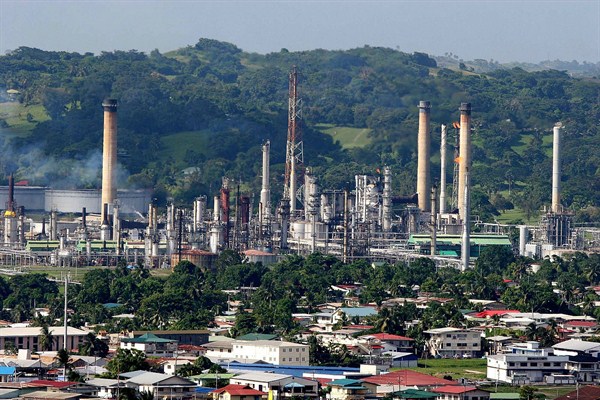Resource booms and busts are a sad reality for most commodity-based developing countries, and Trinidad and Tobago is no exception. While by far the wealthiest of the Caribbean economies, thanks to its oil and gas resources, the country is currently mired in a severe recession after the collapse of world oil prices beginning in 2014. The economy contracted by 1 percent that year, followed by further declines of 2.1 percent in 2015 and 2.8 percent in 2016, according to data from the International Monetary Fund.
Oil and gas, which make up about 40 percent of gross domestic product and 80 percent of exports, have provided the islands with one of the highest per capita incomes in Latin America. But the current trends are worrying. Trinidad and Tobago’s economy went through a similar, but more severe, contraction following the oil price collapse in the 1980s. From 1983 to 1989, economic activity fell by an average rate of 4.7 percent per year. Still, the country recovered with the oil markets, and annual growth averaged 3.9 percent in the 1990s.
Higher oil prices buoyed Trinidad and Tobago’s economy during the 2000s, when growth averaged 6.5 percent a year, in spite of the international financial crisis. Most forecasts see oil prices recovering at some point, although they are unlikely to reach pre-2014 levels of slightly over $100 per barrel anytime soon. How much hope does the oil market hold out for Trinidad and Tobago?

